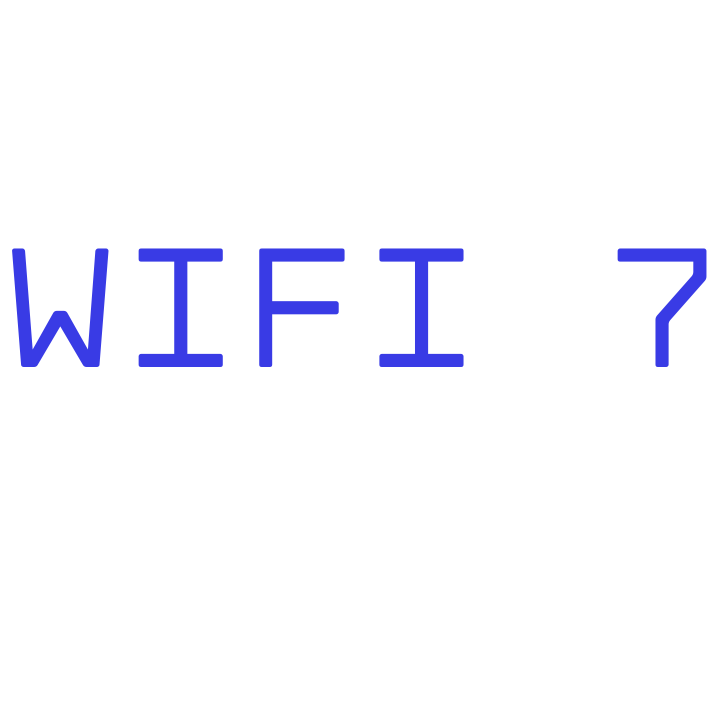



The evolution of wireless technology has led to significant advancements over the years, with each new standard offering faster speeds, better reliability, and improved efficiency. Wi-Fi 7, officially known as IEEE 802.11be Extremely High Throughput (EHT), is the next big leap in wireless networking, promising blazing-fast speeds, ultra-low latency, and enhanced efficiency for modern homes, offices, and industries.
If you’re wondering what Wi-Fi 7 is, how it compares to previous generations, and whether you should upgrade, this in-depth guide will answer all your questions.
What is Wi-Fi 7?
Wi-Fi 7 is the latest wireless networking standard, designed to deliver speeds up to 46 Gbps, almost five times faster than Wi-Fi 6. It introduces new technologies like 320 MHz channels, Multi-Link Operation (MLO), and 4K QAM modulation, which enhance data transmission and reduce congestion in high-traffic networks.
In simple terms, Wi-Fi 7 is all about speed, stability, and efficiency, making it perfect for gaming, streaming, smart homes, and businesses that demand top-tier wireless performance.
How Wi-Fi 7 Works
Wi-Fi 7 operates across three frequency bands:
- 2.4 GHz (for long-range, lower-speed connections)
- 5 GHz (for mid-range, high-speed performance)
- 6 GHz (for ultra-fast speeds and minimal interference)
Unlike previous Wi-Fi standards, Wi-Fi 7 utilizes Multi-Link Operation (MLO), allowing devices to connect to multiple frequency bands simultaneously. This significantly reduces network congestion and improves reliability, especially in busy environments like smart homes, offices, and public spaces.
Wi-Fi 7 vs. Wi-Fi 6 vs. Wi-Fi 6E: Key Differences
Wi-Fi 7 introduces major improvements over Wi-Fi 6 and Wi-Fi 6E:
- Speed Boost: Wi-Fi 7 offers up to 46 Gbps, compared to Wi-Fi 6’s 9.6 Gbps.
- Better Bandwidth: 320 MHz channels double the bandwidth of Wi-Fi 6.
- Lower Latency: Improved efficiency for gaming, video calls, and VR.
- Multi-Link Operation (MLO): Devices can connect to multiple bands at the same time for better performance.
- More Devices Supported: Handles high-density networks more efficiently.
These improvements mean smoother gaming, faster downloads, and better performance in crowded networks.
Wi-Fi 7 Speed and Performance
Wi-Fi 7’s theoretical maximum speed is 46 Gbps, a significant jump from Wi-Fi 6’s 9.6 Gbps. While real-world speeds will be lower due to network conditions, Wi-Fi 7 ensures uninterrupted 4K/8K streaming, cloud gaming, and ultra-responsive online experiences.
Key Speed Enhancements:
- Higher data transmission rates via 4096-QAM, allowing routers to send more data per signal.
- Multi-RU (Resource Unit) support, improving efficiency for multiple connected devices.
- 320 MHz channels (vs. Wi-Fi 6’s 160 MHz) for double the bandwidth.
Wi-Fi 7 Features and Improvements
Wi-Fi 7 isn’t just about speed—it introduces several groundbreaking features:
Multi-Link Operation (MLO)
- Devices can connect to multiple frequency bands at once.
- Eliminates network congestion and reduces interference.
- Ensures more stable connections during high-traffic situations.
320 MHz Channel Width
- Twice the bandwidth compared to Wi-Fi 6.
- Better for high-speed applications like cloud computing and VR.
4096-QAM Modulation
- More efficient data encoding.
- Improves overall network speed by up to 20%.
Lower Latency
- Ideal for gaming, video conferencing, and VR.
- Faster response times compared to Wi-Fi 6/6E.
What Devices Support Wi-Fi 7?
Wi-Fi 7 is still rolling out, but several routers, laptops, and smartphones are now Wi-Fi 7-compatible.
Wi-Fi 7-Compatible Devices (2025)
Wi-Fi 7 Routers:

Wi-Fi 7 Laptops:

Wi-Fi 7 Gaming Consoles & VR Devices:

Do You Need a Wi-Fi 7 Router?
You should upgrade to Wi-Fi 7 if you:
- Have gigabit internet speeds (Wi-Fi 6 might limit your connection).
- Use multiple smart home devices and need better network efficiency.
- Want the best gaming, VR, or 8K streaming experience.
- Live in a household with many simultaneous users.
Stick with Wi-Fi 6 if you:
- Have a standard 500 Mbps or slower internet connection.
- Don’t experience network congestion or slowdowns.
When Will Wi-Fi 7 Be Available?
- First Wi-Fi 7 routers launched in late 2023.
- Most flagship devices (smartphones, laptops) in 2024-2025 support Wi-Fi 7.
- Broad adoption by 2026.
How to Upgrade to Wi-Fi 7
1. Check Your Internet Plan
- If your internet speed is below 1Gbps, you may not need Wi-Fi 7 yet.
2. Buy a Wi-Fi 7 Router

3. Upgrade Your Devices
- Ensure your laptop, phone, or gaming console supports Wi-Fi 7.
Final Thoughts: Is Wi-Fi 7 the Future?
Wi-Fi 7 represents the biggest leap in wireless technology in years, delivering faster speeds, ultra-low latency, and more efficient device handling.
If you need next-level performance for gaming, streaming, or smart homes, Wi-Fi 7 is worth the upgrade. But if your current Wi-Fi 6 setup meets your needs, you can wait until more devices support it.
Are you upgrading to Wi-FiThe evolution of wireless technology has led to significant advancements over the years, with each new standard offering faster speeds, better reliability, and improved efficiency. Wi-Fi 7, officially known as IEEE 802.11be Extremely High Throughput (EHT), is the next big leap in wireless networking, promising blazing-fast speeds, ultra-low latency, and enhanced efficiency for modern homes, offices, and industries.
If you’re wondering what Wi-Fi 7 is, how it compares to previous generations, and whether you should upgrade, this in-depth guide will answer all your questions.

